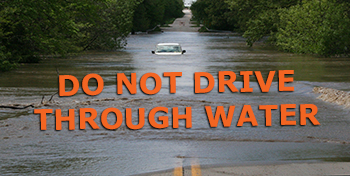The Importance of Flood Information in Texas
Flooding is a common natural disaster in Texas, with its unpredictable weather patterns and geographic features. Being informed about flood risks and preparedness measures is crucial for residents to protect themselves and their properties.
Understanding Flood Risks
Texas experiences various types of floods, including flash floods, river floods, and coastal floods. Factors such as heavy rainfall, hurricanes, and inadequate drainage systems can contribute to the severity of flooding in different regions of the state.
Accessing Reliable Information
Government agencies, such as the Texas Division of Emergency Management and the National Weather Service, provide valuable flood information through alerts, warnings, and flood maps. It is essential for residents to stay updated on weather forecasts and evacuation orders during flood events.
Flood Preparedness Tips
- Develop a family emergency plan that includes evacuation routes and communication strategies.
- Prepare an emergency kit with essentials like water, non-perishable food, medications, and first aid supplies.
- Elevate electrical appliances and install flood barriers to minimize water damage in your home.
- Stay informed through local news sources and official websites for real-time updates on flood conditions.
Community Resilience
In times of flooding, communities in Texas come together to support each other through rescue operations, shelter provisions, and recovery efforts. Building resilience through education, preparedness drills, and infrastructure improvements can enhance the collective response to future flood events.
Conclusion
By staying informed about flood risks, preparing adequately, and fostering community resilience, Texans can mitigate the impact of floods on their lives and properties. Remember that knowledge is power when it comes to dealing with natural disasters like flooding in the Lone Star State.
Essential Tips for Staying Safe During Texas Floods
- Stay informed about weather forecasts and flood warnings in your area.
- Have an emergency kit ready with essentials like water, food, medications, and first aid supplies.
- Create a family emergency plan that includes evacuation routes and meeting points.
- Avoid walking or driving through flooded areas as water levels can be deceptive and dangerous.
- Keep important documents in a waterproof container or store digital copies in a secure location.
- Turn off utilities if instructed to do so by authorities to prevent accidents during flooding.
- Follow evacuation orders promptly to ensure your safety.
- Stay tuned to local news and official sources for updates on the flood situation.
- Help others in need if it is safe to do so during a flood emergency.
Stay informed about weather forecasts and flood warnings in your area.
It is essential to stay informed about weather forecasts and flood warnings in your area to ensure your safety and preparedness during flood events. By monitoring updates from reliable sources, such as the National Weather Service and local emergency management agencies, you can stay ahead of potential risks and take timely actions to protect yourself, your loved ones, and your property. Being proactive in receiving and heeding weather alerts can make a significant difference in how effectively you respond to changing flood conditions and minimize the impact on your community.
Have an emergency kit ready with essentials like water, food, medications, and first aid supplies.
It is crucial to have an emergency kit prepared with essential items in case of a flood in Texas. This kit should include necessities such as water, non-perishable food, medications, and first aid supplies. Having these items readily available can make a significant difference in ensuring your safety and well-being during a flood emergency. Remember to regularly check and update your emergency kit to ensure that it remains stocked and ready for any unforeseen circumstances.
Create a family emergency plan that includes evacuation routes and meeting points.
Creating a family emergency plan that includes evacuation routes and meeting points is essential when preparing for potential floods in Texas. By outlining clear procedures for evacuation and establishing designated meeting locations, families can ensure that everyone knows how to stay safe and reunite in the event of a flood emergency. This proactive approach not only enhances personal safety but also promotes a sense of readiness and unity within the family unit during times of crisis.
Avoid walking or driving through flooded areas as water levels can be deceptive and dangerous.
It is crucial to avoid walking or driving through flooded areas in Texas, as water levels can be deceptive and pose significant dangers. Floodwaters may conceal hidden hazards such as debris, submerged obstacles, or swift currents that can sweep away individuals or vehicles. By heeding this advice and refraining from entering flooded zones, individuals can protect themselves from potential harm and reduce the risk of accidents or emergencies during flood events.
Keep important documents in a waterproof container or store digital copies in a secure location.
To safeguard vital documents during flood events in Texas, it is advisable to either store them in a waterproof container or keep digital copies in a secure location. By taking this precaution, individuals can protect essential paperwork such as identification cards, insurance policies, property deeds, and medical records from water damage. Having access to these documents post-flooding can streamline recovery processes and facilitate insurance claims, ensuring a smoother transition back to normalcy.
Turn off utilities if instructed to do so by authorities to prevent accidents during flooding.
During flooding in Texas, it is crucial to follow authorities’ instructions to turn off utilities to prevent accidents and ensure safety. By disconnecting electricity, gas, and water supplies as directed, individuals can reduce the risk of electrical hazards, gas leaks, and contaminated water sources. This proactive measure not only safeguards personal well-being but also helps prevent further damage to properties and infrastructure during flood events. Adhering to official guidance on utility shutdowns is a responsible action that can contribute to mitigating risks and ensuring a more secure environment for everyone affected by flooding in Texas.
Follow evacuation orders promptly to ensure your safety.
Following evacuation orders promptly is crucial for ensuring your safety during a flood in Texas. These orders are issued based on the latest information and assessments of the flood situation, aiming to protect residents from imminent danger. By heeding evacuation orders without delay, you increase your chances of avoiding potential hazards and reaching safe locations where emergency services can provide assistance. Prioritizing your safety by following these orders promptly is a proactive step towards safeguarding yourself and your loved ones during a flood emergency in Texas.
Stay tuned to local news and official sources for updates on the flood situation.
It is crucial to stay tuned to local news and official sources for timely updates on the flood situation in Texas. By monitoring reliable sources, such as news broadcasts and government alerts, residents can stay informed about changing weather conditions, evacuation orders, and safety recommendations during flood events. Keeping abreast of the latest information ensures that individuals can make well-informed decisions to protect themselves and their families in the face of potential flooding risks.
Help others in need if it is safe to do so during a flood emergency.
During a flood emergency in Texas, it is important to remember the value of helping others in need, if it can be done safely. Offering assistance to those who are vulnerable or trapped can make a significant difference in saving lives and providing support during a crisis. By extending a helping hand to those affected by floods, we not only demonstrate compassion and solidarity but also contribute to building a stronger and more resilient community that comes together in times of need. It is essential to prioritize safety precautions while lending aid, ensuring that both the rescuer and the individual being helped remain out of harm’s way amidst the challenging conditions of a flood emergency.




